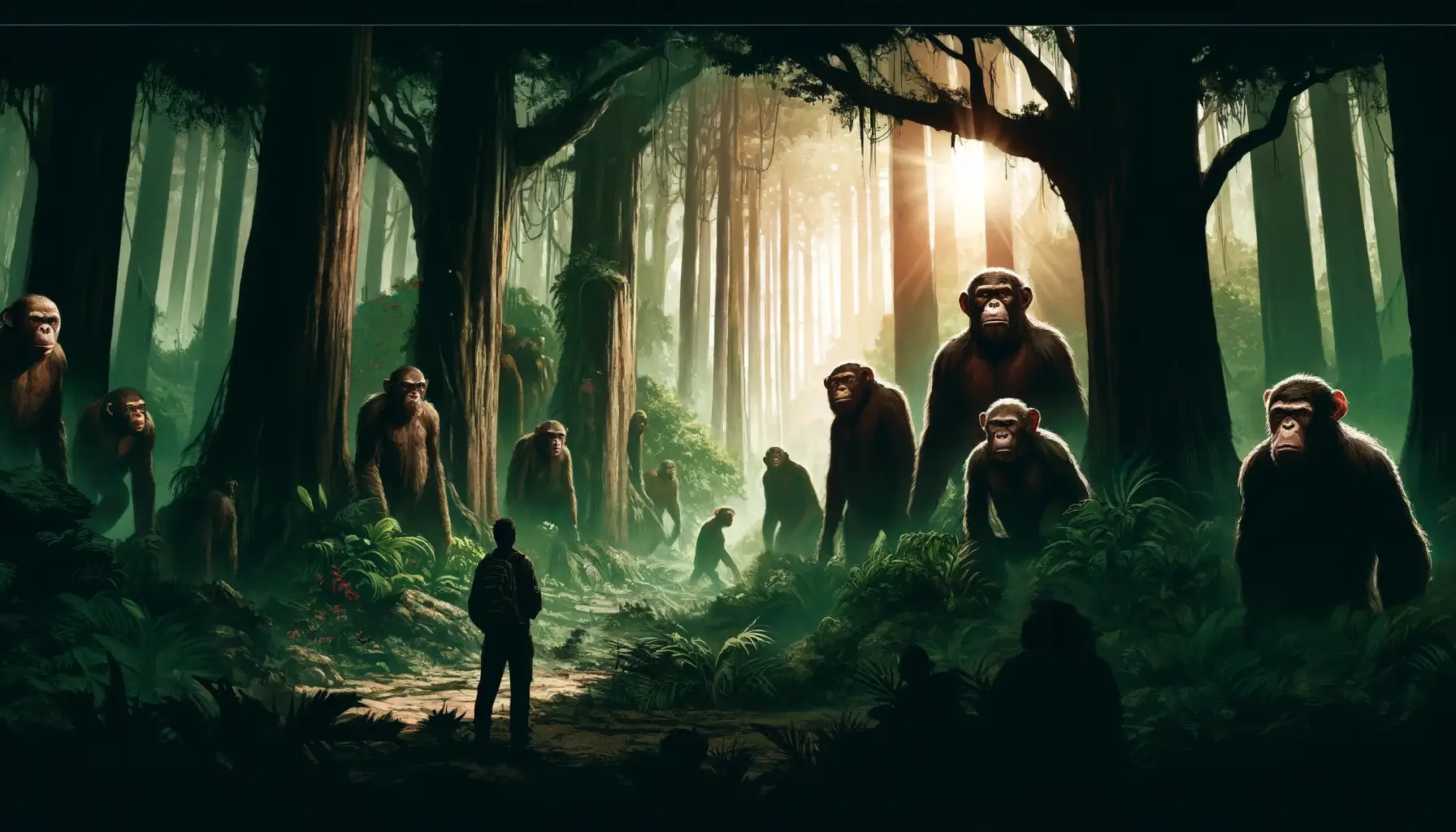“Kingdom of the Planet of the Apes” extends the rich legacy of the iconic franchise with a blend of sophisticated cinematic techniques and a compelling narrative. The film, set in a dystopian future where intelligent apes have risen to prominence, delves into the evolving society of the apes and their complex interactions with the remaining human survivors.
Plot Overview
“Kingdom of the Planet of the Apes” is set in a dystopian future where intelligent apes have risen to prominence while humanity has significantly declined. The movie continues the saga of the Planet of the Apes franchise, focusing on the evolving society of the apes and the remaining human survivors.
The plot revolves around the leadership struggles and societal development among the apes, with various factions emerging with different visions for their future. The central conflict often explores themes of power, loyalty, and survival. The humans, on the other hand, are depicted as a dwindling species, struggling to coexist or reclaim their place in the world.
Mae is a central character who plays a crucial role in the evolving narrative. She is a young, intelligent ape with a strong sense of justice and an innate leadership quality. Mae finds herself at the center of the struggle for power and survival within the ape society.
The plot follows Mae’s journey as she navigates the complex political landscape of the ape kingdom. After the events of the previous films, the ape society is divided into various factions, each with its own ideology and vision for the future. Mae belongs to a faction that believes in coexistence and cooperation, both among the apes and with the remaining human survivors.
As tensions rise and conflicts become inevitable, Mae’s leadership and diplomacy skills are put to the test. She advocates for peace and mutual understanding, often finding herself in opposition to more aggressive and warlike factions. Her compassionate approach gains her both allies and enemies within the ape community.
Mae’s character is also deeply involved with the human element of the story. She forms a bond with a group of humans who are striving to rebuild their society. This relationship adds another layer of complexity to her character, as she must balance her loyalty to her own kind with her empathy for the struggling humans.
Cinematic Making:
Advanced CGI and Motion Capture: The movie utilizes cutting-edge CGI and motion capture technology to create lifelike and expressive apes. The technology, pioneered in earlier films of the series, is further refined in this installment. Actors’ performances are captured in meticulous detail, translating their expressions and movements into the digital characters seamlessly.
Immersive Visuals: The film’s cinematography is another highlight, with sweeping, post-apocalyptic landscapes and detailed, immersive environments. The combination of practical effects and digital artistry creates a visually rich world that feels both expansive and intimate.
Direction and Storytelling: The direction balances large-scale action sequences with intimate character moments, allowing for a blend of spectacle and emotional depth. The storytelling focuses on the complexities of leadership and societal evolution, providing a thought-provoking narrative that goes beyond mere action.
Sound Design and Music: The sound design and musical score play crucial roles in enhancing the atmosphere and emotional impact of the film. The use of ambient sounds, coupled with a powerful musical score, accentuates the tension and drama of key scenes.
Viewers’ Response:
Critical Acclaim: Critics have generally praised the film for its visual effects, storytelling, and performances. Reviews often highlight the technical achievements and the emotional depth of the characters, particularly Mae. The film is considered a worthy addition to the franchise, maintaining the high standards set by its predecessors.
Audience Reception: Audience reactions are varied but largely positive. Fans of the series appreciate the continuation of the storyline and the development of new and existing characters. The emotional and thematic depth of the film resonates well with viewers who enjoy thoughtful science fiction.
Box Office Performance: The movie has performed well at the box office, reflecting strong interest and positive word-of-mouth. The combination of a loyal fan base and general audience curiosity has driven significant ticket sales, particularly in markets with a strong following for the franchise.
Discussion and Debates: The film has sparked discussions and debates among viewers, particularly regarding its themes of leadership, coexistence, and morality. The character of Mae, with her compassionate approach to leadership, is a focal point for many conversations, highlighting the film’s ability to provoke thought and dialogue.
Social Media and Online Reviews: Social media and online review platforms show a mix of reactions. Positive comments often focus on the film’s visuals and emotional impact, while some criticism is directed at pacing and predictability. Nonetheless, the overall sentiment is favorable, with many viewers expressing satisfaction with the film’s direction and execution.
“Kingdom of the Planet of the Apes” stands out for its technical prowess and the depth of its narrative. The film’s combination of advanced technology, immersive visuals, and strong performances has garnered both critical acclaim and audience appreciation. Despite some critiques, the overall response reflects a successful continuation of the beloved franchise, making it a visually stunning and thought-provoking addition to the Planet of the Apes saga.



